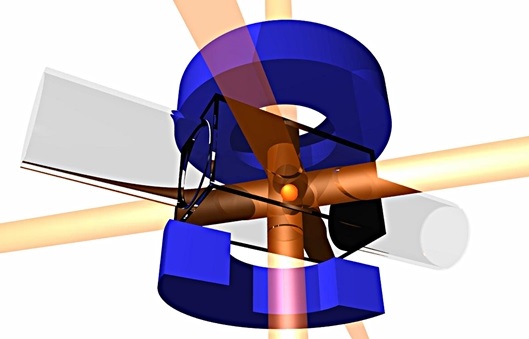15 Sep 2015
Once the domain of the physicist, laser cooling and trapping of atoms is poised to escape the lab through a project led by Gooch & Housego. Funded by Innovate UK through September 2016, the FreezeRay program brings together partners from academia and industry to develop a robust tabletop system as the first step in commercializing cold atom systems.
Cooled atoms can be used to create highly accurate atomic clocks for inertial navigation, finance and power synchronization. They yield atomic interferometers capable of detecting changes in gravity of less than one part per billion for underground asset detection, water table monitoring, and seismic mapping to predict natural disasters. Other applications include secure long-distance quantum communication, imaging of electric currents through materials, and medical diagnostic technology.
Well over a thousand labs worldwide work with cooled atoms, dedicating the better part of a temperature-controlled room to the task. FreezeRay will reduce this to a mere 25 kg or less – no lab required. G&H will contribute a highly stable all-fiber laser system and control electronics, leveraging components already widely deployed in telecommunications for their reliability and efficiency. Academic partner University of Birmingham brings a strong background in the miniaturization of cold atom systems, and will perform testing of the completed units.
The heart of the system will be a robust polarization-maintaining Erbium doped fiber amplifier originally developed by G&H for use in space applications. Roughly 10 W of input power at 1560 nm will be doubled in a periodically poled lithium niobate crystal to achieve the 1 W of output power at 780 nm required for cooling, drawing on G&H core competencies in growth and processing of lithium niobate for high power applications. This approach offers higher power and greater reliability than a compact diode laser design. Atomic cooling demands an ultra-stable laser; it must be frequency-locked, have a linewidth of < 1 MHz, and deliver a consistent power profile from pulse to pulse, all benefits of the proposed G&H design.
The laser will be delivered to a compact, high performance vacuum chamber with integrated magneto-optical trap, developed by project partner e2v. Their novel approach uses prisms to split a single fiber input into the six opposing beams required for cooling, eliminating the need for a series of fiber splitters. Instead, G&H will develop a large-beam input collimator to mate to the vacuum chamber, using a telescope design to deliver a 70-80 mm beam to fill the prisms. The telescope will use custom lenses manufactured in-house, applying design and assembly expertise acquired from transmission and imaging applications in machine vision and the life sciences.
Just as early desktop computers offered a viable alternative to bulky mainframe computers in the 1970’s, so Project Freeze-Ray will create a compact, practical system to facilitate the development of cold atom applications for real-world use. By basing the cooling laser on field-proven telecom products from G&H, the system stands to benefit from reduced cost and improved reliability, allowing cold laser technology to make a quantum leap toward use in the field.
For more information on G&H’s capabilities in the commercialization of photonics R&D, please visit the G&H Systems Technology Group web page















